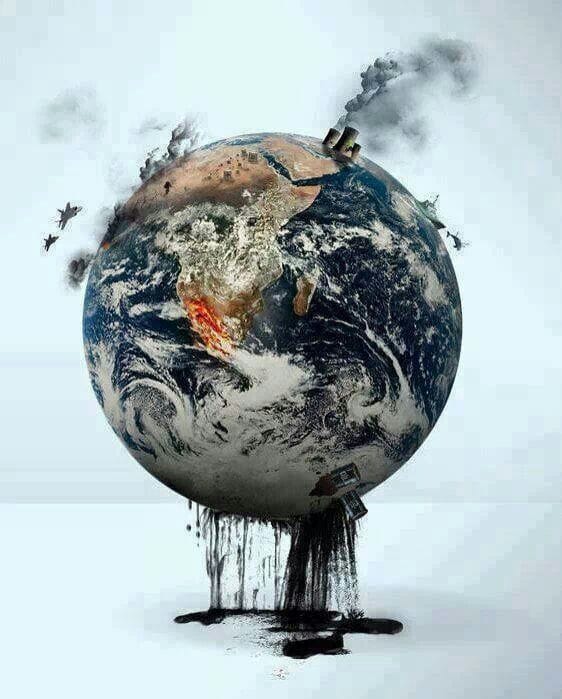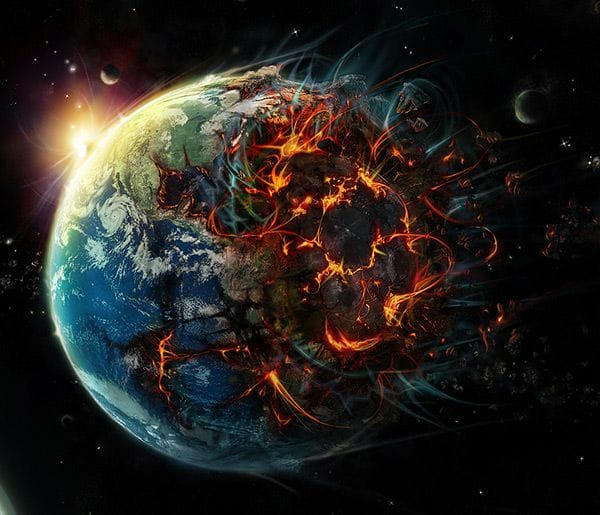Life on Earth has thrived for billions of years, but what happens when end of life on Earth? From fiery extinction events to the sun’s slow transformation into a red giant, the future of our planet is both fascinating and inevitable. Join me as we explore the causes, signs, and timelines of life on Earth’s eventual finale—because even the most incredible stories have an ending.
What Will Cause Life on Earth to End?
Life on Earth will end primarily due to natural and human-driven factors, including the sun’s evolution and environmental changes. Over millions of years, increased solar radiation reaching Earth and rising carbon dioxide levels will alter atmospheric conditions, triggering extinction of animal life and plant life. Human impact accelerates these processes, while the distant future holds inevitable shifts leading to the death of planet Earth. Therefore, understanding these causes is crucial to predict Earth’s future.
Understanding Extinction Events
Extinction events have shaped Earth’s history repeatedly, with mass extinction episodes wiping out large percentages of complex life. These events, occurring every 100 million years on average, result from geological upheavals, asteroid impacts, or drastic climate shifts. For example, the great dying 250 million years ago caused the most severe mass extinction, affecting life on Earth as we know it. Studying past extinctions helps explain possible futures.
The Role of Global Warming
Global warming, driven by greenhouse gas emissions, increases Earth’s surface temperature and disrupts ecosystems. This modern phenomenon accelerates extinction rates by altering habitats critical for terrestrial planets near the end of their habitable lifetimes. Rising carbon dioxide, a primary greenhouse gas, worsens atmospheric conditions, threatening the survival of remaining life. Hence, global warming critically impacts the lifespan of Earth’s biosphere.
Did you know that Earth has experienced five major mass extinction events in its history, dramatically reshaping life on Earth?
Human Impact on Earth’s Ecosystems
Human activities have significantly accelerated Earth’s ecological decline, causing habitat loss, pollution, and climate change. These impacts have increased extinction rates, endangering multitudes of life forms and ecosystems. While Earth’s natural cycles persist, human influence modifies the environment faster than natural recovery, threatening life on Earth and potentially triggering a new mass extinction if unchecked.
How Long Until Life on Earth Will End?
Scientists estimate life on Earth will persist for another 1 to 2 billion years before the sun’s increasing brightness renders the planet uninhabitable. Within the next 100 million years, rising solar radiation and atmospheric changes will cause plant life to decline. Yet, complex life may survive for several million years beyond that, slowly diminishing as Earth moves toward the end of its habitable lifespan.
Projected Timeline Over Millions and Billions of Years
Earth’s future spans billions of years, with key stages marking life’s decline. Around 600 million years from now, rising carbon dioxide and temperature shifts will stress ecosystems. By 1 billion years, photosynthesis may decline drastically. Ultimately, in approximately 4.5 billion years, the sun becomes a red giant, engulfing Earth and ending all life. This timeline highlights the gradual yet inevitable path to extinction.
What is the Lifespan of Earth’s Habitable Conditions?
The lifespan of Earth’s habitable conditions depends on solar evolution and atmospheric stability. NASA research indicates Earth will remain suitable for life for about 1.5 billion years, after which increased solar radiation will disrupt photosynthesis and the carbon cycle. These changes mark the end of their habitable lifetimes, forcing life to adapt or face extinction.
Factors Influencing Earth’s Future
Multiple factors influence Earth’s future, including solar brightness, volcanic activity, and human-induced climate change. The sun and global carbonate-silicate geochemical cycles regulate atmospheric carbon dioxide, affecting climate stability. Additionally, geological processes and rare Earth conditions play a role in sustaining life. Together, these factors determine how long life on Earth may continue.
What Are the Signs of Life’s Decline on Earth?

Signs of life’s decline include rising extinction rates, habitat degradation, and atmospheric changes. Current indicators, such as increased carbon dioxide and global warming, reflect stress on ecosystems. Geological records from past extinctions, like those 66 million years ago, show similar patterns, warning that Earth’s biosphere is under unprecedented pressure today.
Current Indicators of Extinction
Presently, biodiversity loss and ecosystem disruption reveal early stages of extinction. Human activities have accelerated habitat loss and climate change, leading to extinction of animal life and plant life. Increased carbon dioxide levels and atmospheric pollution further threaten complex life, signaling that Earth will be extinct in its current biological form if trends continue.
Geological Evidence of Past Extinctions
Geological evidence highlights mass extinction events like the one 250 million years ago, known as the great dying. Rock layers and fossil records reveal rapid loss of species due to climate shifts and volcanic activity. These records offer critical insights into how life on Earth responds to catastrophic events and inform predictions for the future of Earth.
Did you know that the sun’s gradual brightening will increase solar radiation reaching Earth, threatening the planet’s habitability in about 1.5 billion years?
Effects of Carbon Dioxide Levels on Life
Carbon dioxide influences Earth’s climate by regulating the greenhouse effect. Elevated levels increase global temperatures, disrupt photosynthesis, and reduce oxygen availability, threatening life on Earth. Studies show that fluctuations in atmospheric carbon dioxide over millions of years correspond with extinction events and ecosystem changes, highlighting its role in Earth’s lifespan.
What Will Happen When the Sun Becomes a Red Giant?
When the sun becomes a red giant in about 4.5 billion years, it will expand dramatically, engulfing Earth. This process will vaporize the planet’s surface, eliminate the atmosphere, and end all life. Prior to engulfment, increased solar radiation will cause extreme heating and atmospheric loss, making Earth uninhabitable well before the sun’s final phase.
Impact on Earth’s Climate and Atmosphere
As the sun brightens, Earth’s climate will experience severe warming, disrupting atmospheric balance. This will increase carbon dioxide levels and reduce plant life, impairing photosynthesis. Atmospheric changes will lead to extinction of animal life and reduce biodiversity, pushing Earth toward the final stages of the lifespan of the biosphere.
Future of Photosynthesis Under Stellar Evolution
Photosynthesis depends on stable light and atmospheric conditions, both threatened as the sun evolves. Within 1 billion years, increased solar radiation will damage plant life, reducing photosynthetic activity. This decline will cascade through food chains, causing extinction of animal life and signaling a critical step toward the eventual death of planet Earth.
Predictions for Earth’s Geological Changes
Geological changes over millions of years will include volcanic activity and shifting tectonic plates, influencing atmospheric composition. Such changes have triggered past mass extinction events and will affect future ecosystems. Understanding these processes helps predict how Earth’s surface and climate will evolve as life on Earth diminishes.
How Have Past Extinction Events Shaped Life on Earth?
Past extinction events, like the one 65 million years ago that ended the dinosaurs, have reshaped life by allowing new species to evolve. These mass extinction episodes reset ecological balances, influencing the development of complex life. The great dying 250 million years ago serves as a powerful lesson on how catastrophic change alters Earth’s biological future.
Did you know that current global warming is accelerating extinction rates by increasing atmospheric carbon dioxide, disrupting photosynthesis and ecosystems worldwide?
The Great Dying: Lessons from 250 Million Years Ago
The great dying, occurring 250 million years ago, caused the most severe mass extinction, wiping out nearly 90% of species. Triggered by volcanic eruptions and climate shifts, it shows how geological and atmospheric disruptions can devastate life. This event informs theories about Earth’s future extinctions and the fragility of ecosystems.
Mass Extinction Events and Their Aftermath
Mass extinction events drastically reduce biodiversity, but they also pave the way for evolutionary innovation. After these events, surviving species diversify and adapt to new conditions. This cycle has repeated every 100 million years or so, shaping the long-term evolution of life on Earth and providing context for understanding future risks.
Survival Strategies of Multicellular Life
Multicellular life has survived past extinction events through adaptation, migration, and diversification. Life forms have evolved resilience mechanisms to endure environmental stress. However, current rapid changes challenge these strategies, raising concerns about how much longer complex life can persist on Earth.
What Is the Future of Earth Beyond Human Existence?

Even if human life ends, Earth will continue to change, with geological and solar processes driving its future. Life may persist for millions of years after human extinction, but eventually, rising solar radiation and atmospheric loss will end life as we know it. This highlights Earth’s dynamic nature beyond human influence.
Theoretical Perspectives on the End of the Universe
Theories on the end of the universe, such as heat death or big crunch, provide context for Earth’s ultimate fate. While Earth will be extinct long before these cosmic events, understanding these theories helps frame the planet’s life and death within a broader cosmic perspective, emphasizing its temporary nature.
What Will Earth Look Like in One Billion Years?
In one billion years, Earth will have warmer climates, diminished plant life, and altered ecosystems due to solar brightening and atmospheric changes. Photosynthesis will decline, and extinction rates will rise, signaling a planet nearing the end of its habitable conditions. This future snapshot reflects gradual but irreversible environmental shifts.
Life and Death of Planet Earth: A Cosmic Perspective
From a cosmic perspective, Earth’s life span of 4.5 billion years is brief. The sun’s evolution dictates the planet’s timeline, ending with engulfment by the red giant phase. Geological and biological cycles have shaped life, but eventually, all terrestrial planets near the end will face extinction, underscoring the transient nature of life on Earth.
Frequently Asked Questions about The End of the life on Earth
How could life on Earth come to an end?
Life on Earth could end through a combination of factors such as the sun’s brightening, which increases solar radiation reaching Earth, triggering a mass extinction. Additionally, global warming caused by greenhouse gas emissions accelerates habitat loss. In the distant future, when the sun becomes a red giant, Earth will be engulfed, marking the death of planet Earth. Human actions today may also accelerate extinction rates, threatening life as we know it.
How long until Earth is no longer habitable?
Scientists estimate that Earth will remain habitable for approximately 1.3 to 1.5 billion years. However, signs of life’s decline will appear much earlier as rising carbon dioxide and atmospheric changes disrupt photosynthesis and ecosystems. The lifespan of Earth’s biosphere will end long before the sun’s red giant phase, as plant life will result in extinction of animal life several million years beforehand.
How many years are left for humans on Earth?
Humans may have several million years left on Earth, but current environmental damage and climate change could shorten this timespan drastically. While the lifespan of Earth’s habitability extends beyond human existence, ongoing global warming and ecological stress suggest human survival is increasingly uncertain within the next 100 million years, especially as life forms and ecosystems struggle to adapt.
As we reflect on the future and the eventual end of life on Earth, it’s clear that both natural forces and human actions play crucial roles. How do you think we can influence Earth’s future to delay extinction? What steps should we take today to protect the remaining life? Share your thoughts, because understanding our planet’s destiny starts with a conversation, and every voice matters in shaping the future of Earth.
Read also about Laser Teeth Whitening